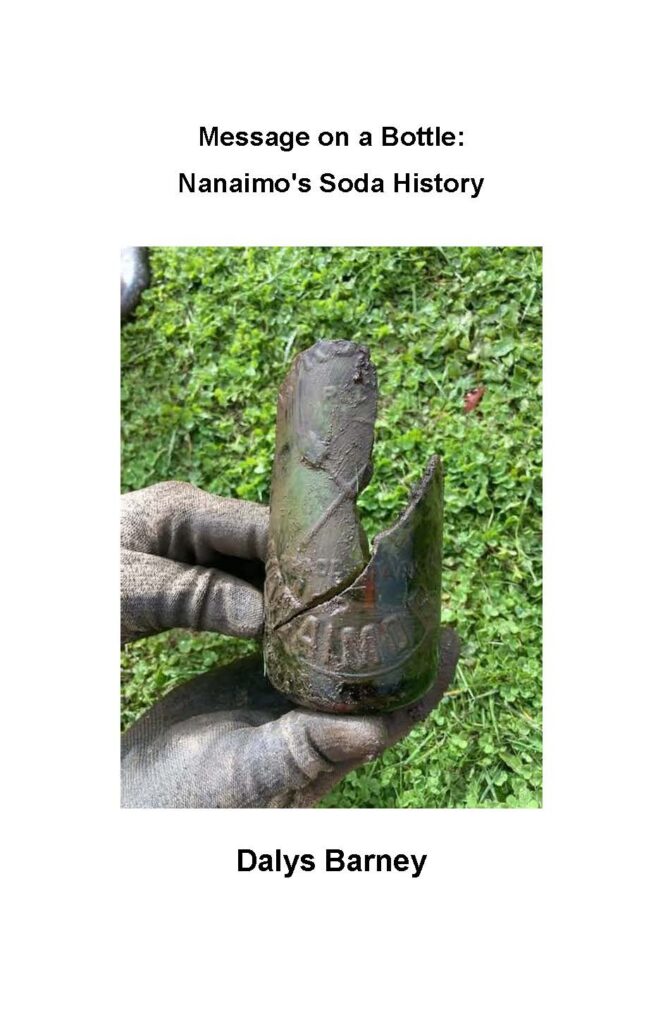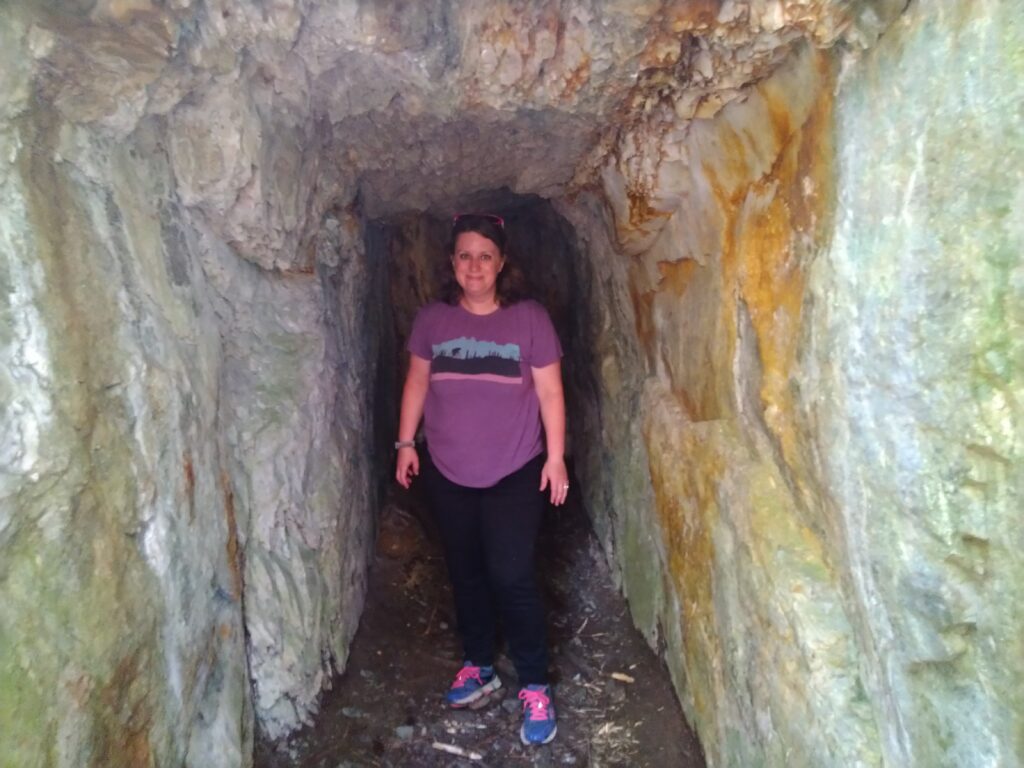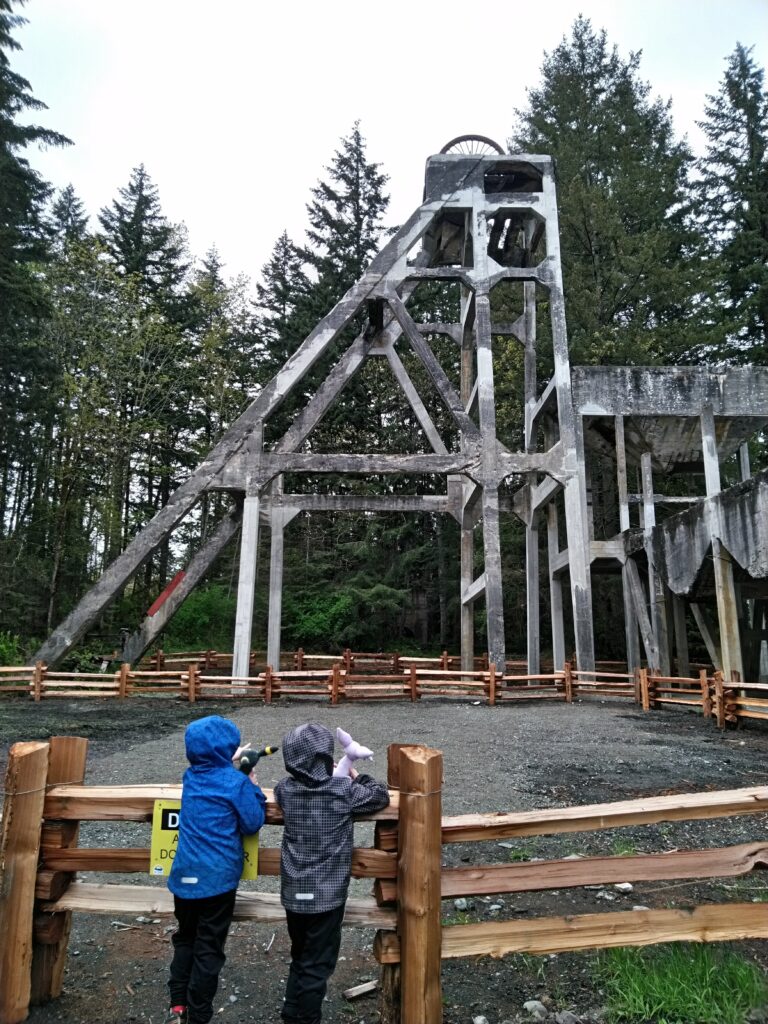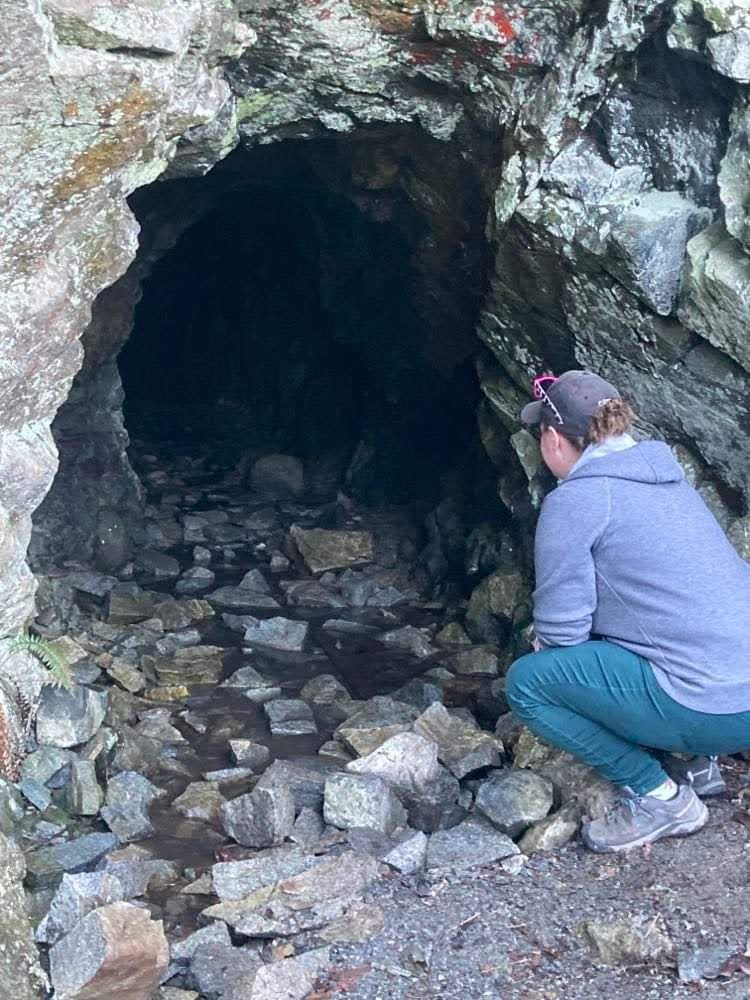Dave Flawse
In a previous interview with Island History Notable Christine Meutzner, she had suggested I check out Dalys Barney’s blog because it was similar to my own.
I’d already found it months earlier, though. Before launching the Vancouver Island History Blog, I took some notes from Dalys’s Van Isle History Explorer blog.
What I like about Dalys’s blog is the notes with sources (so many sources) and the bibliography with oodles of entries. There are hundreds of books in there, so it didn’t surprise me to learn Dalys works at VIU as a library technician and has a passion for reading.
My patience for dry history books is about as thin as the paper they’re printed on, and when I need to slog through them, I’m usually in and out of consciousness on the couch.
I admire those who really can sit down and enjoy these books for what they are—information baths. For anyone writing about history, getting pruned fingers in these baths is a necessity. Most of what we read won’t make it into the stories we write, but it’s important to give the impression of that full iceberg lurking underneath the surface.
The Van Isle History Explorer blog is a history nugget full of information about coal mining, Nanaimo, family history, book reviews, and whatever else Dalys fancies to put on there.
I connected with Dalys in March and had some questions about her blog, but first I had to ask her about reading…
Dave: I saw on your social media that you read 89 books in 2021.
Dalys: Yeah, last year was a big year for reading. I mean, I’ve always been a reader, but last year I read probably more than usual. I had a little more time to read, fewer social activities. That’s a pretty common experience over the pandemic, I would imagine.
Dave: That’s a lot of reading. I don’t know how much I read, but nowhere near that! Awesome. Did the blog keep you busy as well?
Dalys: I like writing, but I wasn’t quite in a space where I wanted to do a lot of writing, especially in the beginning of the pandemic. So, I haven’t done as much writing as I would have liked over the course of the pandemic. I’ve gotten back into it a little bit. I’ve been working on a longer project.

Dave: Can you tell me about this longer project?
Dalys: Yeah, I thought it would be something for the blog, but then it evolved into something much, much longer. It’s about bottles, like soda bottles from Nanaimo. My dad’s a bottle collector and the catalyst for [starting the project] was that my husband dug up a couple of old bottles in Ladysmith, and I was kind of comparing what he had dug up to what my dad has in his collection.
And then I started researching the bottles and then it just it snowballed. I ended up putting together a little booklet. All together I think it’s about 45 pages, like an 8½ by 11 piece of paper folded in half booklet.
I’ve just finally got a draft that I’m happy with. And I went to Staples and printed up the first colour copy. Because I used photos of my dad’s collection in the booklet, it needed to be in colour.
Now I have this draft and I’ve got to figure out what to do with it. Like, how can I make this thing without breaking the bank? And I’m just not sure yet. I’ve got to explore that a little more, because colour printing is really expensive.
Dave: What does the book cover?
Dalys: I don’t know if you’ve ever seen a Rumming bottle. It’s got a crossed pick and shovel on it. It’s very iconic for Nanaimo because those are miners’ tools. W.E. Rumming had a soda company in Nanaimo. There used to be several of them. It’s just kind of something that’s gone by the wayside now with the big giants like Coca-Cola and Pepsi taking over the whole market.
But in a different time, there were more independent bottlers locally. I kind of trace back what was going on and then try to situate the different bottles through time.
Dave: Cool. Super interesting.
Dalys: I learned a lot. Bottles were originally hand-blown. Each was unique. Then they started being made by machines. And I started to learn this one is made by a machine versus this one, that’s blown in a mould.
It was really interesting. But yeah, I’ve got something I’m happy with, and it took a long time to get there. Now, I’ve just got to figure out what to do with it. I’m not sure what that is yet.
Dave: It’s a tough length, you know? At 45 pages, publishers would think it’s too short.
Dalys: Yeah, so it might be just something that I can maybe print off a hundred copies and see what happens. But even that could be more costly than I’m willing to take on at this point in time.
Dave: You could go bigger? Continue to make a book out of it.
Dalys: There’s nothing really like that out there for this area that I’m aware of. I think people would be interested. Rumming sold one bottle that had really iconic imagery embossed right on the bottle: the crossed pick and shovel, but you also see ones with the Bastion on it. It was iconic and had that local feel. All from a local company, and people like that stuff, right?
And I think it’s starting to come back a little bit, like Phillips Soda Works in Victoria is now bottling soda on Vancouver Island. Now there’s all kinds of flavoured sodas and things like that. People are starting to maybe break away from the big names a little bit more, which is kind of nice. Maybe there is hope yet for independent bottlers to find a little slice of the market.

Dave: Why did you start the blog?
Dalys: I wanted to have a platform for my writing in a little bit longer format than what I felt was appropriate on Facebook. I do maintain a Van Isle History Explorer Facebook page. And shorter things, I might put them on the Facebook page, especially things that maybe I have accompanying photos for. But I wanted to have a space for longer format things that were really text driven.
So, a blog seemed like a good idea. And I was also interested in learning more about having a blog. It’s a little bit of an experiment, a little bit of learn-as-you-go.
I wanted somewhere to showcase my writing that didn’t have any rules and I wasn’t going to get rejected. When you’re your own publisher, there’s space for whatever you want to do there.
Dave: And if you were to submit to history magazines, the word limits are pretty low. In a blog you can go way further.
Dalys: That’s right. And I have some pieces that I even felt were too long. So, I’ve broken them into parts. I’ve done some book reviews. I’ve done some family history writing. I’ve done some local history. Just whatever I want to do, right? I’m the boss of what goes on that blog.
Dave: Have you had good feedback from the blog?
Dalys: I’ve had some people leave comments, and it’s been really nice, especially on the piece, “The Wellingtons of Nanaimo,” about the different Wellingtons around the Nanaimo area. People seem to really like that one.
I have had VIU students reach out to me through my blog asking some questions, if I could help them with their own research, like recommend a source. And so that’s been really rewarding for me, since I work at the university. It feels like I may be giving something back a little bit, which is really nice.
And then also, I would say on the family history side, I’ve had relatives distant and not-so-distant reach out that I never knew I had, and that’s been really great, including some people in Norway. Oh, yeah, you know, social media really allows it to happen. Whereas maybe even 10 years ago, it would be a lot harder to reach out. But yeah. I’ve discovered distant relatives who have read something on my blog and then reached out, and that’s been really nice.
Dave: What’s “The Wellingtons of Nanaimo” piece about?
Dalys: There’s Part 1 and 2 of that blog post. And Part 1 is called “Old and New,” because there were two iterations of Wellington relatively close together. It started in one place and then the townsite really ended up developing in a second place.
And then Part 2 is “South, East, West, North, and South Again,” because there are different areas around Nanaimo called South Wellington, East Wellington, West Wellington, North Wellington, and then a separate South Wellington. So, the South Wellington of today is the second South Wellington, and that’s actually where I grew up. Which is, if you’re familiar with where the Bungee Zone and WildPlay Element Park is, that’s South Wellington.

Dave: What interests you about exploring history physically?
Dalys: I’m a big reader as I said, and I also enjoy reading with my kids, who are seven now. We, either alone or together, will read some history-related books that are tied to the area and it’s really neat to go out and visit that place, especially if there’s something tangible still there to look at. It really connects you with history and helps you to visualize a little bit easier what the past was like.
As an example, there’s a young adult novel called Trapped by Coal, which is set in Extension, and we read it with the boys and then we did kind of a two-part trip. We went to Extension and there’s a little miners’ park there. We also went to Morden Mine, where the headframe and tipple still stands.
It’s one of the only tangible things from the coal-mining era that you can visit and look at. That was really interesting, it’s really meaningful for the boys to see what we read about.
Dave: You list a lot of sources in your stories. How do you go about finding the information you need?
Dalys: I do work in a library, and it’s an academic library. The whole idea of citing your sources is something very familiar to me, working in that environment. I’ve also been fortunate enough to have education and training about how to search for things.
I’m familiar with how library catalogues work because that’s part of my job, and I have some pretty good ideas on where to look for sources. I just feel it’s really important to give credit to people who’ve done the research before. And also it can be a jumping-off point for someone who wants to explore something further or something that’s sort of related, but not quite. And maybe by looking at the footnotes or bibliography, they can connect with some resources that will help them with their own research.
Dave: What’s the hardest part about maintaining your blog?
Dalys: For me it’s the time involved. I’m really critical of my writing and so I don’t want to put things out there that I’m not happy with. Sometimes I’ll have things in draft for a very, very long time and it can be really slow in terms of putting new stuff out there. But I’d rather it be something I’m proud of and something I’m happy with.
Dave: I think that can be a good thing, you know, being critical. Sometimes giving ourselves time is the only way we can self-edit effectively and come to the page with fresh eyes.
Dalys: Yeah, and I’ve found that sometimes I’ll work on something for a while, and then let it rest and I’ll come back to it with fresh eyes or a new perspective, and I’ll see mistakes I’ve made or just a different path.
Dave: What do you hope people take away from your blog?
Dalys: I think the biggest thing for me is the idea that if I can inspire other individuals or other families to like, get out there and explore Vancouver Island or Vancouver Island’s history in a way that they might not have done before, that’s great.
